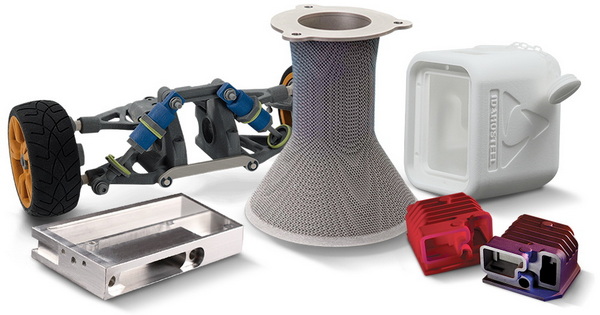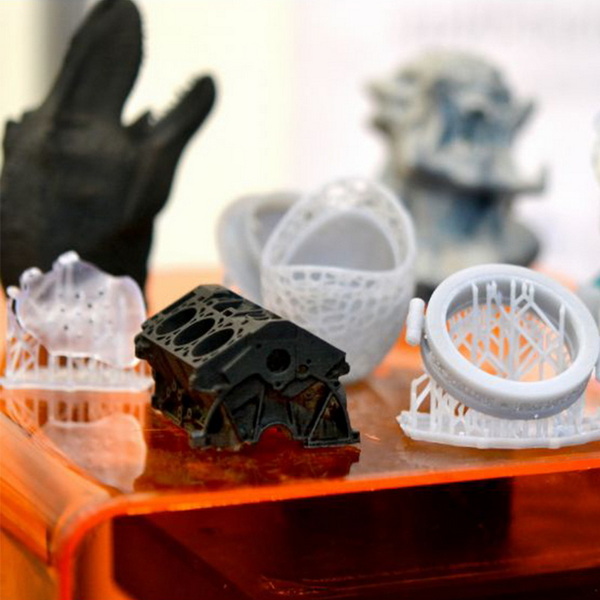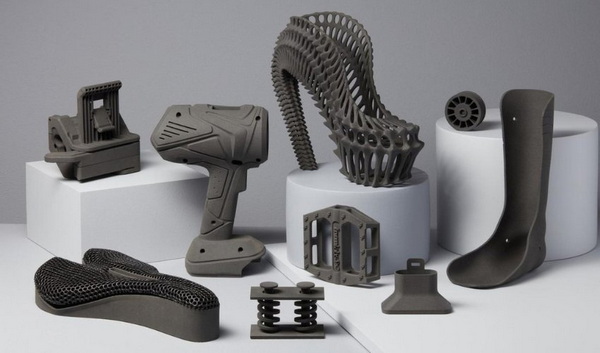
Views: 222 Author: Amanda Publish Time: 2025-10-17 Origin: Site








Content Menu
● What Is 3D Print Prototyping?
● Types of 3D Printed Prototypes
● Advantages of Choosing Professional 3D Print Prototype Services
● Comprehensive Portfolio of Services
● Quality and Reliability Standards
● Selecting the Right 3D Print Prototype Manufacturer
● Frequently Asked Questions (FAQs)
>> 1. What is a 3D print prototype service factory?
>> 2. How long does it typically take to receive a 3D printed prototype?
>> 3. What materials are commonly used for 3D print prototypes?
>> 4. Can design changes be made after ordering a prototype?
>> 5. What are the main advantages of choosing 3D print prototyping over traditional methods?
In today's highly competitive and fast-evolving product development landscape, the use of professional 3D print prototypes manufacturerhas become essential for businesses aiming to innovate efficiently. These manufacturers offer precise, rapid, and cost-effective solutions to transform digital designs into tangible prototypes. For international brand owners, wholesalers, and producers seeking OEM services, partnering with an expert manufacturer like Shangchen, which specializes in 3D print prototyping alongside CNC machining, sheet metal fabrication, and mold production, is crucial to ensuring quality, reliability, and scalability. This article provides an in-depth understanding of what to expect from professional 3D print prototypemanufacturers, illustrating not only the various capabilities and services offered but also the critical benefits and factors that contribute to a successful product development cycle.

3D print prototyping is an advanced manufacturing process where physical models or components are produced directly from computer-aided design (CAD) files using additive manufacturing techniques. This technology builds objects layer by layer, allowing for complex designs that are difficult to achieve with traditional subtractive methods. Professional manufacturers utilize multiple 3D printing technologies, including:
- SLA (Stereolithography): Uses UV lasers to cure liquid resin into highly detailed and smooth prototypes.
- SLS (Selective Laser Sintering): Employs laser sintering to fuse powdered materials, typically nylon or polyamide, creating robust functional parts.
- FDM (Fused Deposition Modeling): Melts and deposits thermoplastic filaments layer by layer, known for affordability and quick turnaround.
- Metal Additive Manufacturing: Combines metal powders via selective laser melting or electronic beam melting for durable end-use metal parts.
These methods produce prototypes ranging from purely visual models to fully functional components intended for rigorous testing. The professional expertise behind choosing the appropriate technology ensures that the prototypes meet design intent and development goals precisely.[1][2]
A skilled 3D print prototype manufacturer can create a variety of prototype types tailored to different stages of the product lifecycle:
- Visual Prototypes: These help stakeholders visualize size, shape, and color before manufacturing. They are primarily used for presentations, marketing, and design approval.
- Working Prototypes: Manufactured to test fit, assembly, and basic functionality, these prototypes enable engineers to validate mechanical aspects.
- User Experience Prototypes: Mimic both appearance and key functional elements, facilitating usability testing and consumer feedback.
- Functional Prototypes: Created using production-analogous materials to conduct strength, wear, and regulatory testing, assuring the design's readiness for mass manufacturing.[1]
Collaborating with an experienced 3D print prototype manufacturer unlocks multiple business advantages:
- Rapid Product Iterations: Because prototypes are produced directly from CAD files, design adjustments can be quickly implemented and tested without the need for expensive tooling changes.
- Cost Efficiency: Traditional prototyping requires costly molds and tooling. 3D printing reduces upfront costs and material waste by fabricating parts on-demand and layer-by-layer.
- Complex Geometries: The additive nature of 3D printing allows for internal structures, lightweight lattice patterns, and intricate details that are not achievable with conventional methods.
- Customization and Flexibility: Whether producing a single model or customized batches, 3D printing supports bespoke requirements without substantial setup expenses.
- Early-Stage Validation: By physically evaluating prototypes, teams can identify design flaws or functional issues early, reducing iteration cycles and production risks.
- Accelerated Time-to-Market: Fast turnaround on prototypes facilitates quicker decision-making and reduces delays, helping companies respond swiftly to market demands.[3][1]
A professional 3D print prototype manufacturer like Shangchen typically offers a breadth of integrated services alongside 3D printing:
- CAD and Engineering Support: Advising on design optimization for additive manufacturing, ensuring prototypes meet performance and manufacturability goals.
- Multi-Technology 3D Printing: Providing access to an array of additive technologies (SLA, SLS, FDM, PolyJet, metal 3D printing) matched to project requirements.
- Precision CNC Machining: Complementing additive manufacturing for parts requiring tighter tolerances or post-processing refinements.
- Sheet Metal Fabrication and Tooling: Serving prototype testing and pilot production with custom sheet metal parts and molds.
- Surface Finishing and Assembly: Preparing prototypes with post-processing options including painting, sanding, vapor smoothing, and assembly into fully functional units.
- Strict Quality Management: Employing dimensional inspections, material certifications, and functional testing to assure prototype excellence.
- Global Logistics and Packaging: Coordinating specialized packaging and timely worldwide shipping to meet client schedules and protect delicate parts.[4][5][1]

Clients commissioning prototypes from professional manufacturers can expect:
- High Dimensional Accuracy: Typically, tolerances range from ±0.3% to ±0.5%, critical for validating fit and assembly.
- Industry-Standard Materials: Selection includes engineering-grade plastics, elastomers, composite resins, and metals to achieve specified mechanical and aesthetic properties.
- Quick Lead Times: Depending on complexity, prototypes are often delivered within days, enabling agile development.
- Scalability: Capacity to produce from single units for design proofing to small batches facilitating market testing or investor presentations.
- Confidentiality Agreements: Ensuring proprietary designs and intellectual property are protected through non-disclosure agreements and secure handling protocols.[2][6]
To maximize benefits from 3D print prototyping, it is vital to choose a manufacturer that aligns with specific project needs. Key considerations include:
- Technological Capability: Confirm availability of suitable 3D printing technologies to match prototype complexity and material requirements.
- Material Variety: Ensure access to certified materials appropriate for functional or aesthetic prototype needs.
- Industry Experience: Preference for manufacturers with proven expertise in your product category and OEM service background.
- Support and Communication: Availability of design engineers to assist in early-stage optimization and responsiveness during production.
- Turnaround and Pricing: Competitive delivery times that meet scheduled development milestones at reasonable costs.
- Reputation and Reviews: Positive customer testimonials and strong portfolio evidence of successfully handled projects.[6][2]
Choosing a professional 3D print prototype manufacturer is a strategic decision that can significantly impact the success of product development and manufacturing readiness. With the ability to rapidly produce accurate, functional, and visually representative prototypes, these manufacturers empower businesses to refine designs, reduce risks, and accelerate market entry. Integrated services that include state-of-the-art 3D printing, CNC machining, and sheet metal fabrication create a one-stop solution for complex OEM needs. For companies worldwide, trusting an expert like Shangchen ensures access to quality, timely delivery, and confidentiality—cornerstones for innovation and commercial success in today's global marketplace.

A 3D print prototype service factory specializes in creating physical models and functional parts from digital 3D designs using additive manufacturing technologies. These factories support rapid product development by producing prototypes for design validation, testing, and marketing purposes.[2]
The timeline varies depending on the part complexity, size, and printing technology selected. Most professional services can deliver prototypes within a few days to about two weeks, with expedited options often available for urgent needs.[2]
Commonly used materials include PLA, ABS, nylon, photopolymer resins, and various metal powders. Material choice depends on prototype function, mechanical requirements, and aesthetic qualities desired.[4][2]
Yes, manufacturers typically allow revisions after order submission. However, timely communication is necessary to minimize delays and avoid additional charges associated with reprinting or remanufacturing.[2]
3D print prototyping offers faster iteration cycles, lower upfront costs, the ability to produce complex geometries, flexibility for customization, and reduced time-to-market compared to traditional tooling and manufacturing processes.[7][3]
[1](https://fathommfg.com/3d-printing-prototypes)
[2](https://hy-proto.com/top-3d-printing-prototype-service-compare)
[3](https://www.repurvis.com/articles/7-benefits-3d-printing-prototype)
[4](https://www.axisproto.com)
[5](https://www.apt-mold.com/oem-3d-printing-prototype-service/)
[6](https://midlands3d.com)
[7](https://plmgroup.eu/articles/why-use-3d-printers-for-prototyping/)
content is empty!
How Vacuum Mold Casting Compares to Silicone Mold Casting for Precision Parts
Vacuum Mold Casting vs. Resin Casting: Key Differences You Should Know
Vacuum Mold Casting vs. 3D Printing: Choosing the Best Rapid Prototyping Method
Best Vacuum Mold Casting Services for Precision Manufacturing in 2025
Top Vacuum Mold Casting Manufacturers Delivering High-Quality Prototypes
Best Practices from Leading Vacuum Mold Casting Companies Worldwide
Top Vacuum Mold Casting Providers for Custom Batch Production
How to Choose the Right Vacuum Mold Casting Service for Your Product